Breathe It In: The Advantages of Closed Circuit Rebreather Diving
Breathe It In: The Advantages of Closed Circuit Rebreather Diving
This article aims to answer a lot of questions and clarify some lost points and misconceptions about rebreather diving. You won’t be an SME (subject matter expert) by the time you’ve read this, or any other article on the topic, but you will have a clearer understanding of the sport. Let’s jump right in (moderate pun intended).
What’s a Rebreather?
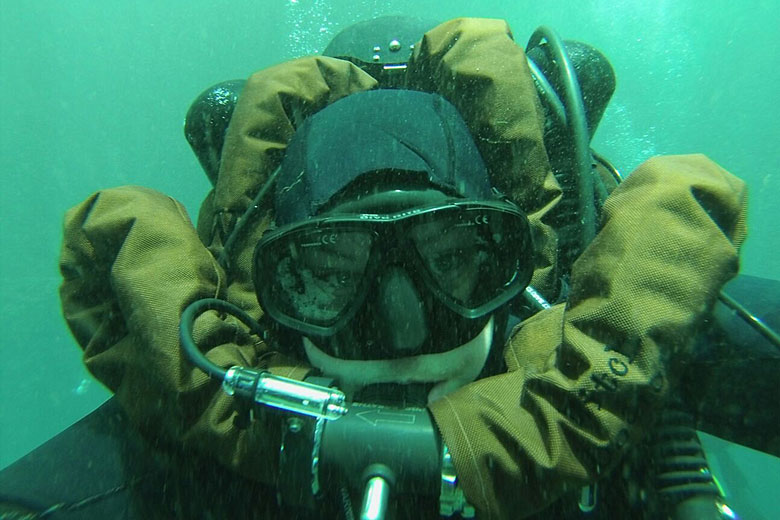
There are so many infographics, presentations and slideshows on the matter of rebreathers. You can find much of your “How does the [insert CCR model here] function?” questions by visiting a popular search engine, but here’s the gist of it. Imagine you’re breathing into a super technical rubber-ish bag thing that doesn’t let any outside air in.
Two things need to happen for this process to be successful for any duration outside a few minutes. We need to replace metabolized oxygen and remove expired Carbon Dioxide. These are quite simple tasks, really. So as not to confuse anyone, we’re going to move through the two primary types of rebreather circuits in separate sections.
The Semi-Closed Circuit Rebreather – SCR (Nitrox Rebreather)
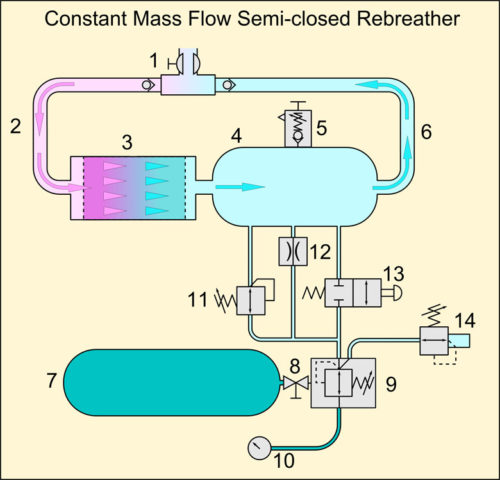
Ok, so you’re breathing on this bag and you feel your respiratory rate increasing. Your lips are tingling and you’re becoming confused. Either you’ve put spray paint inside the bag or you’re experiencing a “CO2 hit.” Should the oxygen level remain high enough to sustain life, you’ll pass out soon from hypercapnia.
This is the medical term given to an unsustainable level of carbon dioxide buildup in the bloodstream. To mitigate hypercapnia and your doubt-filled friends, you devise a plan to remove the carbon dioxide from the bag by creating a mesh-lined basket to hold some highly corrosive calcium-hydroxide. You then place it in line with the opening of the bag. It’s airtight around the edges, so the air must pass through this material. Great, no more pesky CO2 makes it back as the chemical trades CO2 for heat. That’s really nice; warm, moist gas.
So your CO2 “scrubber” is a success., but while showing it off to your friends, you simply pass out. What happened? Ah, the oxygen level has fallen below a sustainable level and you’ve lost consciousness. You’ve just killed some brain cells and some popularity thanks to “hypoxia.” Too little oxygen in the bloodstream caused your brain to shut everything down in order to preserve life.
However, you’re smart and you’ve got a plan for this oxygen problem. Thinking ahead, you add a vent to the bag so the air in the bag is expelled, should the pressure become too high. After all, if the bag is forcing back under pressure then you can’t hold it in your mouth. Then you take a bottle of Nitrox out of the garage and plug it into a fitting you’ve installed on the bag. After carefully calculating a gas flow rate on your regulator, you crank the valve wide open to hear a faint hiss. The gas is now flowing at a rate that will keep your oxygen level safe.
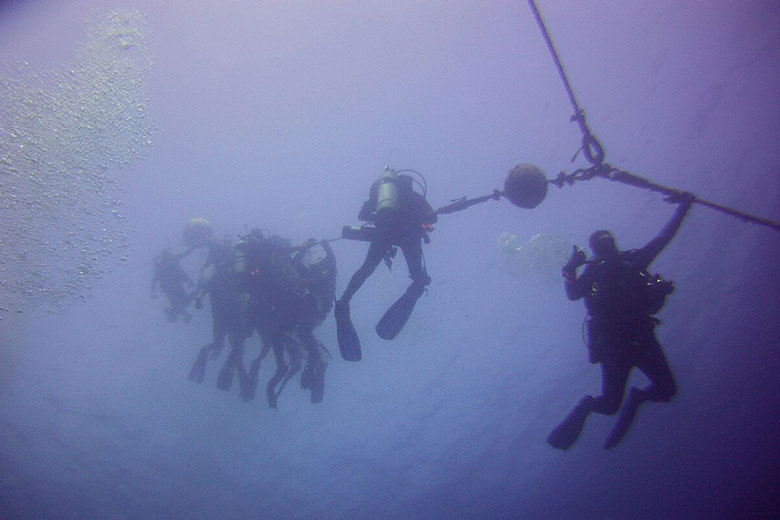
It’s important to remember that because the oxygen content is significantly lower than 100% O2, the flow rate must be higher than it would be on a fully-closed system. This increases hydrostatic loading against your lungs, but makes a back-mounted counterlung more enjoyable. We may discuss counterlung styles and other specific equipment in later articles, but for now just remember a counterlung is that bag we’ve been breathing in since the beginning of the article.
The SCR pumps Nitrox in to ensure you always have fresh gas in the loop. This can extend the usable duration of a standard aluminum 80Cf bottle by ~3.5 times, or allow you to carry a third of the gas for the same dive duration. Consumption rates don’t change with depth either, excluding diluent gas used to maintain ambient pressure in the loop. Two hours at the surface is two hours at 130 feet.
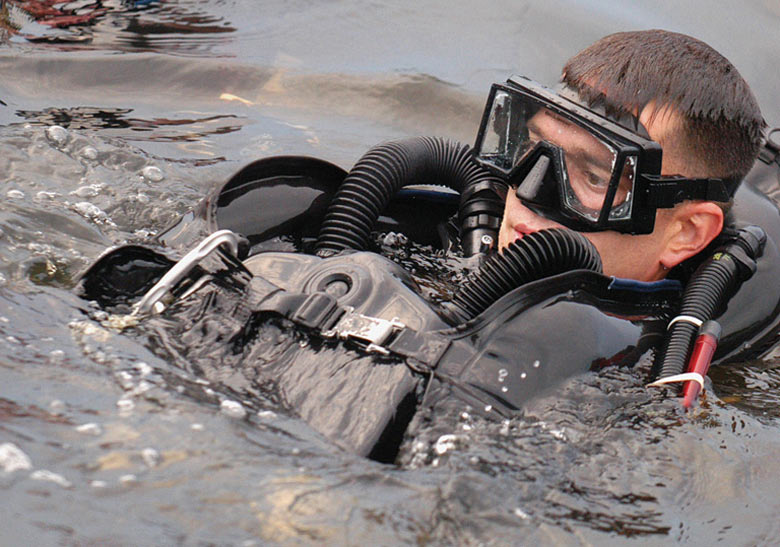
Congratulations on building your first semi-closed circuit rebreather! Offering a special mention for the Dräger LAR-V and a few other O2 rebreathers, let’s discuss how this machine differs. Basically, it doesn’t. Simply decrease the gas flow and switch the Nitrox with 100% oxygen. The only catch is that you’re limited to 33 ft (10m) by the US Navy or 20 feet (7m) by recreational agencies. The “why” of this chaos comes later.
The Revered and Feared Closed-Circuit Rebreather – CCR
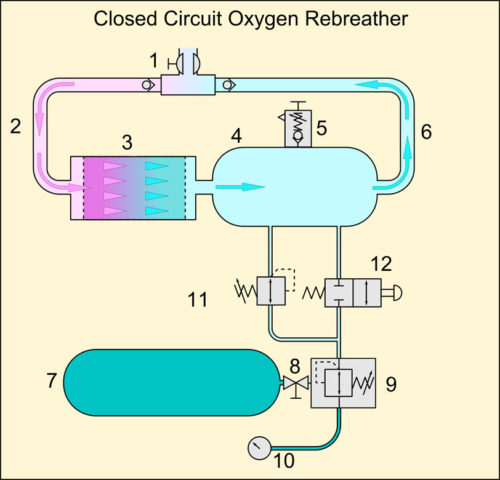
Many of the characteristics from the SCR carry into the CCR, so I’ll assume a good understanding of the information we’ve already covered. As you may have heard, the CCR uses 100% oxygen, as does the O2 rebreather. The major difference is that the CCR is not depth limited by the oxygen. The machine is depth limited by it’s diluent gas.
Here’s how this works; imagine that bag you built in the last section. You’re not a fan of being depth-limited by the Nitrox mixture in your breathing loop, so you decide to change the reservation a little. The vent stays on the bag for good measure. Let’s add some oxygen sensors and connect them to a computer readout so we know what the theoretical oxygen content is at all times. This “theoretical” fraction of oxygen is called the Partial Pressure of Oxygen (PPO2). More on theory later.
Next, we replace the Nitrox bottle with pure oxygen and a “manual addition valve.” I personally use an electronic CCR, but the only difference is that the electronics handle gas addition for you.
For the sake of the explanation, we stick to manual. So you’re breathing in this bag with a perfect balance and adding oxygen manually as it falls below the PPO2 you’ve selected.
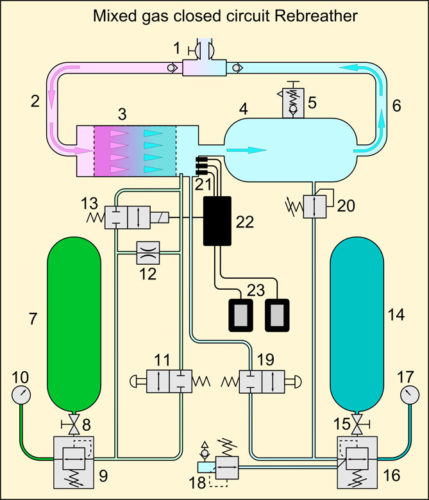
Sounds like you’ve got a rig that will run forever, but you need to figure out how to descend below 33 feet (10m) without raising the gas content above a safe level. You could go really really slowly and metabolize the O2 as you descend, but we also have to contend with Boyle’s Law. Oh and additionally, if the bag has crushed to nothing in just a few feet, then we can’t possibly breathe on it. It would be suicide and adding O2 would be suicide. What are we going to do?
Enter the diluent gas. Plain and simple, diluent gas is the gas we use to maintain ambient loop volume. It’s essentially a modified Open-Circuit regulator (you know, the piece you breathe on underwater when you have a big bottle on your back) that adds gas as the loop falls below safe/usable volume. This gas is in a separate bottle and regulator, typically mounted separately on the diver’s back.
There are other mounting options, but they’re beyond the scope of this particular article.
This gas can be anything you want it to be, but remember that this gas determines your depth limitations. This is a good place for HeliOx or Trimix if you’re diving deeper for longer durations or you can simply run Air Diluent if you’re above recreational limits.
Do I Need a Rebreather? WARNING: Extremely Subjective Content
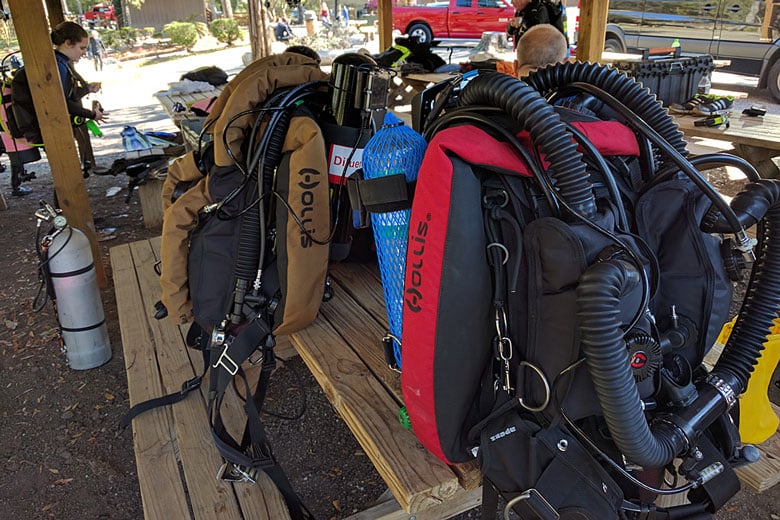
Me, personally? Probably not. Honestly, you probably don’t either. The question is different for everyone and for each rig. SCR divers should be more common than they are and SCR manufacturers should stop making them so expensive and complicated. SCR is almost as simple as Open-Circuit, but with a few extra moving parts.
I still dive my Dräger Dolphin (SCR) on recreational dives because it’s so easy to use. The search for CE compliance on every piece of equipment has caused manufacturers to make rigs “safer” by also adding pre-dive failure points. I know many people that have to bring open-circuit gear with their new SCR models in the event they can’t pass pre-dive checklists. SCR is likely what you need if you’re asking the question.
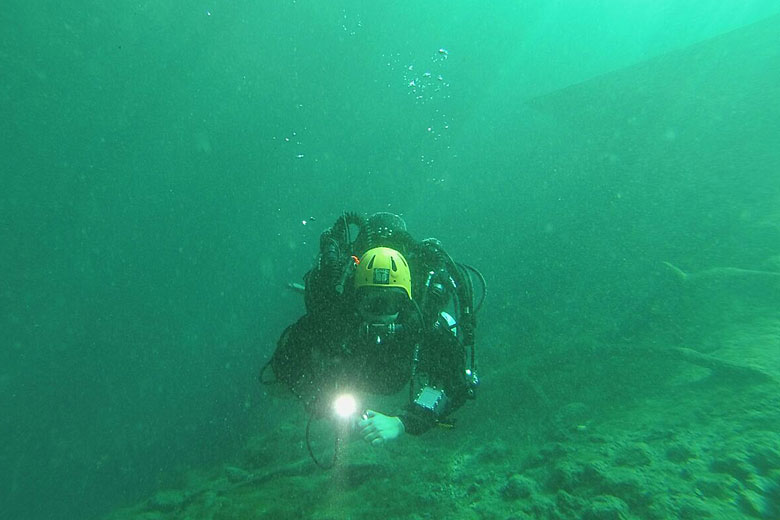
Oh but Witch Doctor, you say, I want to go deeper, longer and further. Ok, get a CCR. Get lots of training, because there’s a lot of training to be done. If you need to explore and you need to go places that require a lot of resources, then you need a Closed-Circuit rig. Which one is up to you. I will say that the single thing that sold me on the CCR over anything else is the silence.
There’s so little noise that you can enter a tranquility you’ve never experienced before and can do it at any depth. I also don’t like feeling rushed. There’s virtually no “time” pressure on a dive under 200 minutes with my CCR machine. We check our gauges, but the pressure to get out of the water in an emergency isn’t there. If your loop is functioning the way it’s supposed to, then you have all the time in the world to solve problems.
Diving an SCR is easy, Dive/No Dive and troubleshooting is easy. No Problem? Continue Diving;. Yes Problem? Bailout to Open-Circuit. You’ll avoid more than 10 minutes of decompression diving with an SCR, so everything is simpler. Let’s look at the advantages and disadvantage of the CCR.
CCR Advantages vs. Disadvantages
Advantage: Dive duration is dramatically increased with very little gas. (I’m not telling you about theoretical scrubber limits in a public article.)
Disadvantage: You still have to carry enough bailout bottles on your person in case the CCR breaks down. This is subjective as some dive teams opt for a “team gas” model which limits the number of bottles necessary on a group dive. I personally don’t recognize team gas to be safe, but I know many that do.
Advantage: The fish think you’re just another fish. There are very little bubbles made with a CCR donned by an experienced diver. The atmosphere is tranquil and fluid. You can meld into the environment and become one with your surroundings.
Disadvantage: Task loading is astronomical. In the beginning of a CCR diving hobby, many people feel the desire to quit the course and move back to the simple ways of open-circuit.
Trust me, you will streamline the task loading that comes with managing multiple systems. This is why training agencies require so much time on the machine before they give you certification cards.
Advantage: Have you seen the price of helium? CCR divers can run HeliOx mixtures as opposed to Trimix in their diluent and bailout cylinders. Yes, it’s still going to cost me $400 to fill my decompression and bailout cylinders, but that’s per year, not per dive. We fill bottles and normally don’t use them until next year when we have to VIP the cylinders. That gas has to be dumped and refilled once per year. A CCR can pay for itself in two diving seasons on average. Makes that “rule of thirds” look a lot more reasonable.
Disadvantage: A friend of mine always says “Buoyancy on Open-Circuit is like performing surgery with a scalpel, but on CCR it’s like performing the same surgery with a 12lb. sledge hammer.” This takes more time than any other skill to perfect. Helium responds differently in your wing (like a buoyancy compensator in SCUBA) than air and the ability to hold your breath or exhale for buoyancy is gone. This will take some practice.
How Can I Select a Quality Instructor?
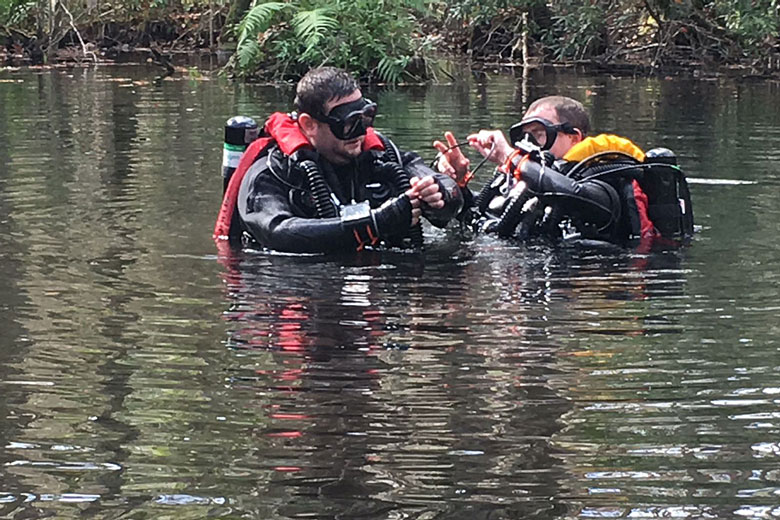
I know a guy that knows a guy that was certified by an instructor that had gone off the reservation. He was teaching dangerous and incorrect procedures under the guise of a renowned agency. I’ll leave it at that.
So how do you pick a good instructor? First, realize that being certified to certify still doesn’t mean you’re doing the right thing. Do your research and don’t just take the instructors word for it. What are they saying in the forums? Post the question to technical groups to see who gets the most positive response. Find out what their backgrounds are in life and certification. Don’t fall victim to a smooth talker, but work with people that have achieved and been recognized for amazing strides in diving. Most of the time, they have the same prices for their classes. Search their name online and see what kind of crazy things have been associated with their name as it relates to diving.
How Do I Select the Right Rebreather?
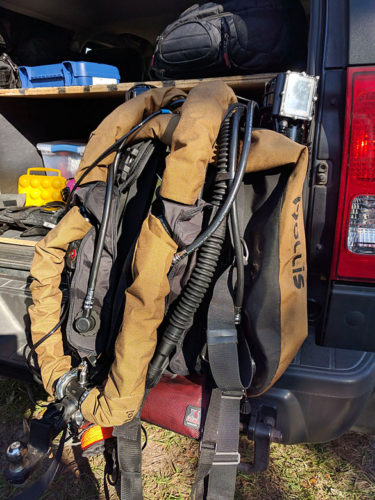
If you think you may want to dive beyond 130 ft (40 m) or stay longer than 120 minutes, then you should consider a CCR. There are ways to store the scrubber material for continued use and if the checklists are completed, you can dive with recreational boats all the time. Buying a Dräger Dolphin on eBay and having it inspected/serviced is a great choice if you don’t know what you want to do.
This is a massive investment for almost all of us. I don’t know anyone that doesn’t cringe at a $12,000 charge on their credit card or bank statement, so it’s important to justify these decisions. Request a demo day with a training agency or go to a diving show like DEMA to get hands on with all of the manufacturers and their equipment.
How do you know which CCR is right for you? Honestly, spend a year or two with the machine you thought would be the best option at the time. Grow to hate it, buy a new unit and crossover. You simply can’t know what you want before you get into it. The only alternative I know to this is to request and fulfill a demo day or a demo weekend with a training agency.
All popular rigs and styles should be represented so that you can make the best decision. In the meantime, go buy a backplate, wing and harness. Get it fitted and make it yours.
PPO2 Theory, As Promised
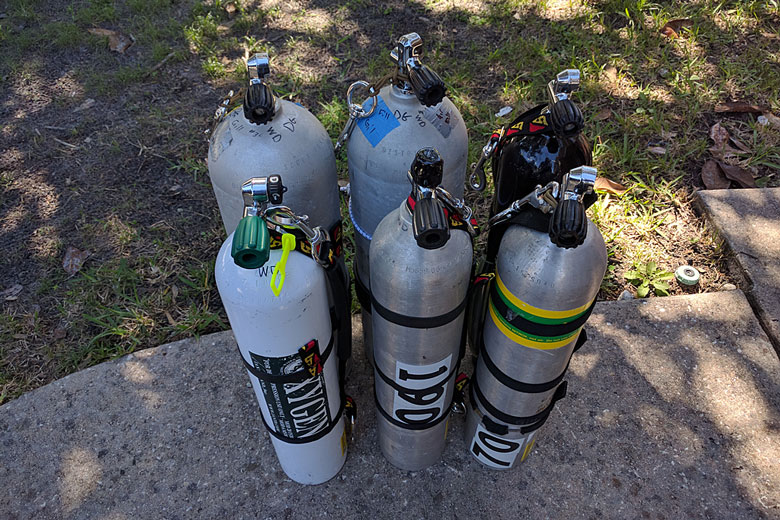
In closing, I want to discuss the “theoretical” oxygen content theory I mentioned earlier.; it’s quite simple, really. On the surface we have varying mixtures of oxygen. The ratio of oxygen to everything else is measured in percentage totaling 100. This is called the Fraction of Oxygen (FO2). The air we’re breathing is 21% oxygen so our FO2 is 21.
Pure oxygen has an FO2 of, you guessed it, 100. In fact, it can never be more than 100 since we are using a scale totaling 100%. In Nitrox class, we learned that a mixture of 32% was safe to 111 ft (33.8m). This number was determined by something they called “PPO2.” The PPO2 of 32% oxygen at 111 ft (33.8m) is 1.4. 1.6 is the maximum number that our instructors pitched because it basically limits oxygen toxicity to the respiratory system where anything over 2.0 tends to affect the brain and the central nervous system.
Basically, in a bottle of gas we have a fixed Fraction of Oxygen, (or any other gas, but don’t worry about that for now). As we descend, the Partial Pressure of Oxygen increases until it’s no longer safe to breathe. It’s at this point we level off for the remainder of our bottom time on the dive, paying close attention to our CNS exposure clock.
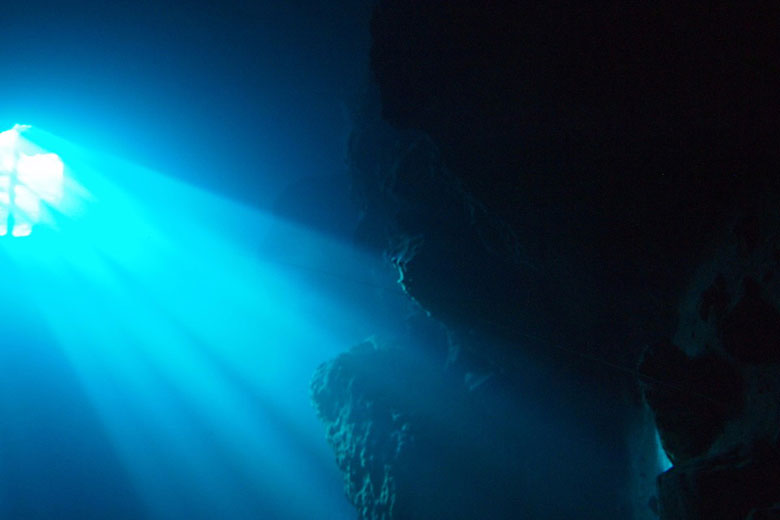
Here’s where things get interesting. The very best way I can explain PPO2 is as follows. This is a theoretical percentage of oxygen (or any other gas, but seriously stop worrying about that right now). At the surface, 100% oxygen has an FO2 of 100% and a PPO2 of 1.0. At 20 ft (7m) however, 100% oxygen still has an FO2 of 100%, but it has a PPO2 of 1.6. Move the decimal over and you have what we call the theoretical content.
Because of the way gasses absorb into tissues, it’s easiest to say, “At 20ft (7m) you are breathing 160% oxygen.” At 33 ft (10m), you’re breathing the equivalent of 200% Oxygen. The body is not good with the toxic effects of long-term exposure to oxygen, so we keep these theoretical limits pretty low when planning our dives.
How does a CCR handle this? Set points. We can choose a PPO2 for our dive and the machine will maintain it. Mine is a PPO2 of 1.1. The CCR changes the Fraction of Oxygen to accommodate the Partial Pressure of Oxygen where Open-Circuit maintains a fixed fraction and maxes out at your set Partial Pressure. This makes CCR machines safer and more effective during decompression stops.
Conclusion
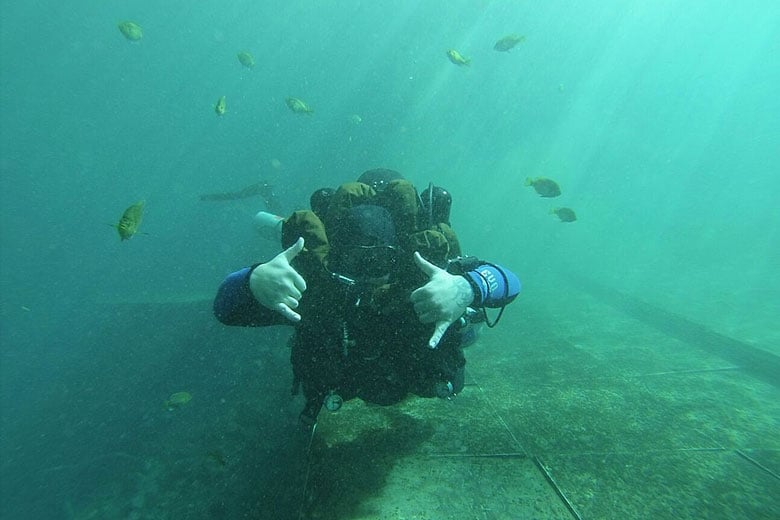
Nothing about this is easy or simple, but it’s a lot of fun. A CCR diver can go so many different directions with their training and hobby that the possibilities are truly endless. You have to find a machine and a diving style that works best for you and you alone.
This is your diving journey and it’s your life to live and maintain. There are many resources available to those looking to move into the higher tiers of diving. When you get there, you’ll understand what everyone perceives as ego in the industry. Not everyone will agree with what I’ve said either, it’s simply the nature of the industry.
Editor-in-Chief’s Note: Please welcome Derek Gill as a contributor on ITS. Derek has been a Plank Owner here at ITS from the beginning and has an extensive background in healthcare, pharmaceutical research and technical diving. He’s been certified in SCUBA since 2000 and diving technical/CCR since 2010. He speaks several languages including Russian and Spanish as well as several computer languages. These combined skills have opened the door to more creative ventures in Network Security and Physical Security consulting. Derek is a veteran of the US Navy and a former Navy Corpsman who worked alongside the US Marine Corps. His military nickname, “Witch Doctor,” has stuck with him ever since and it can now be found across many internet forums where he takes pride in trolling sensational zealots from multiple industries.






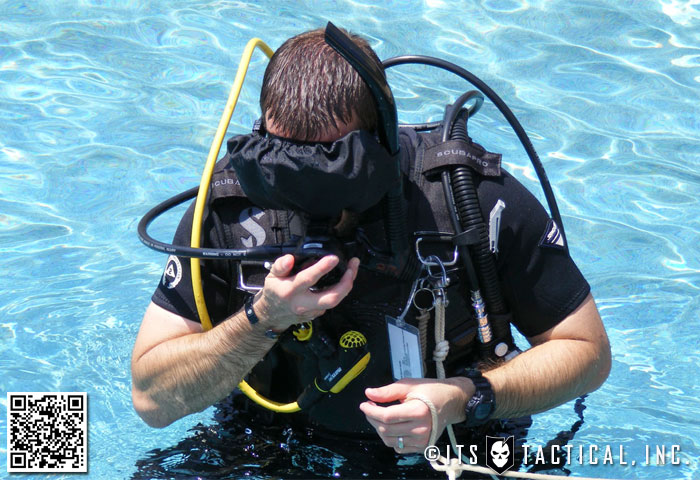
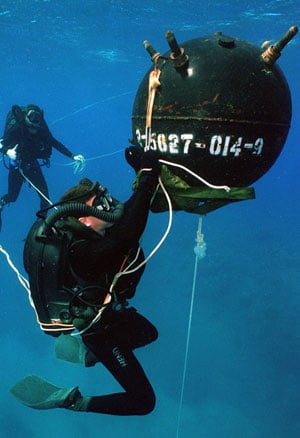
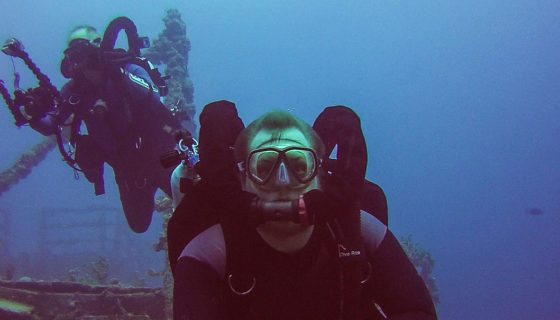
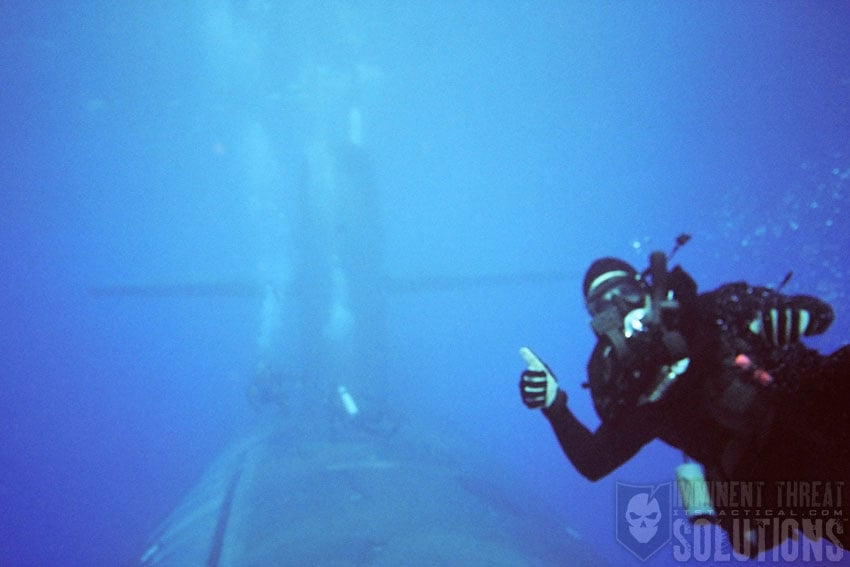

Discussion